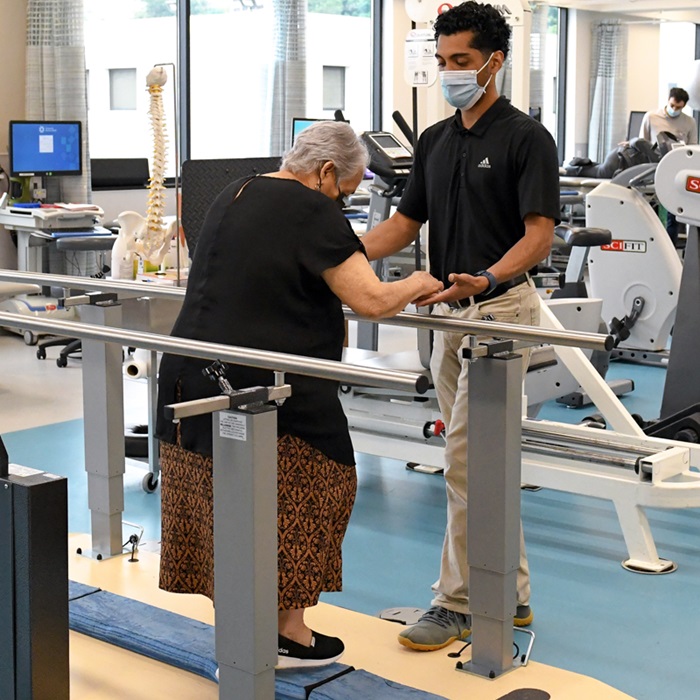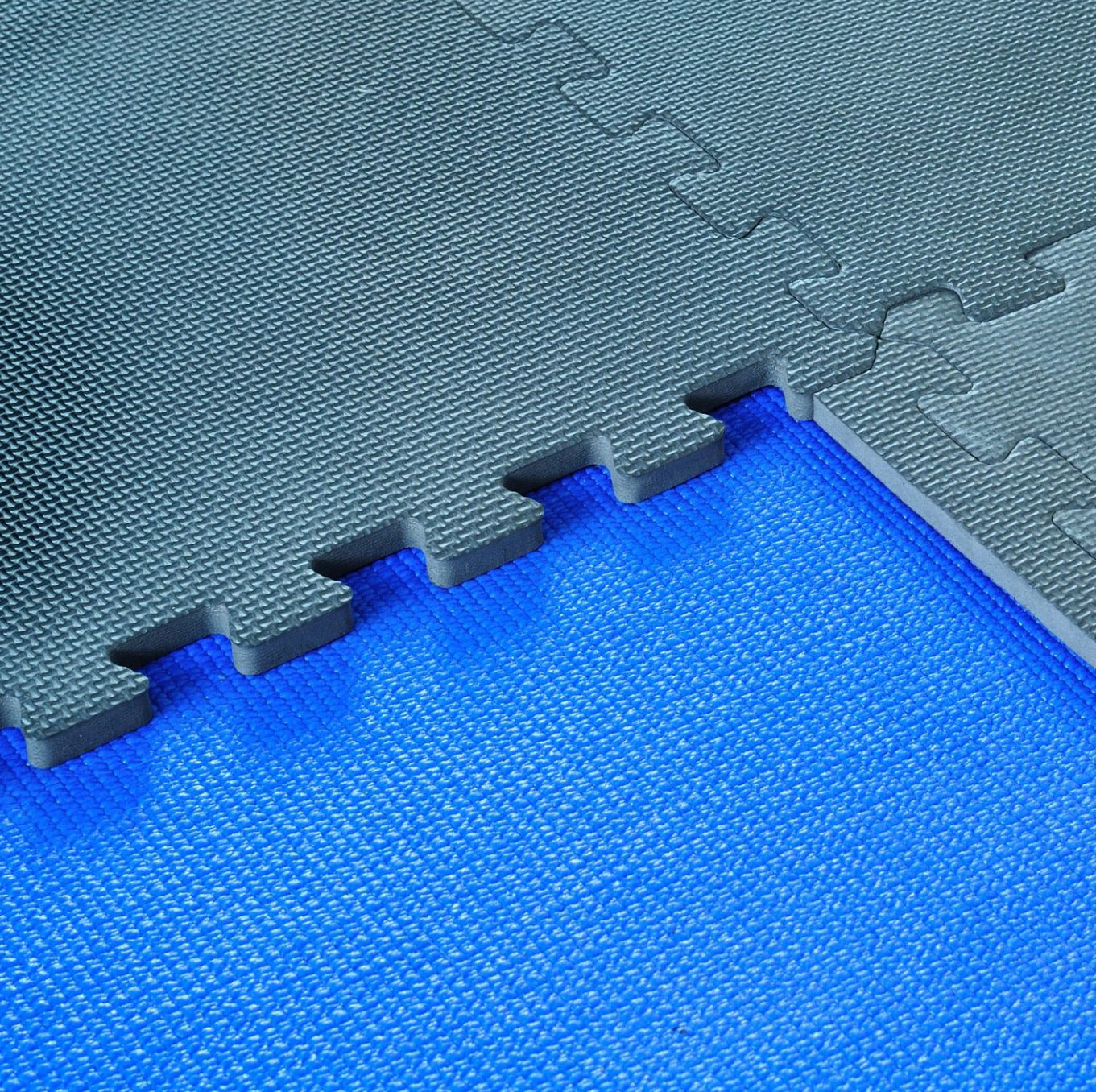What Are the Differences Between Physical and Occupational Therapy?

September 01, 2021
According to Alexandra Fredas, PT, DPT, and Kathryn Tuazon, MS, OTR/L, experts at JFK Johnson Rehabilitation Institute, both physicial and occupational therapies share similar philosophies regarding treatment and patient care - but there are differences.
What is physical therapy (PT)?
As defined by the American Physical Therapy Association, a physical therapist is a “movement expert who optimizes quality of life through prescribed exercise, hands-on care and patient education.” Physical therapists work with patients throughout their lifespans in various settings focusing on rehabilitation and prevention of disease, injury or disability while also promoting fitness and wellness.
According to Alexandra, the goal of PT is to restore and optimize movement within the context of a person’s musculoskeletal, neurological and cognitive abilities to return to meaningful activities in their life. “Physical therapists can utilize therapeutic exercise and hands on treatments, recommend assistive devices and share patient education in order to achieve these goals,” she explains.
What is occupational therapy (OT)?
The main goal of occupational therapy, as noted by Kathryn, is to maximize participation and engagement with meaningful, everyday life activities (“occupations”). Examples can include anything from getting dressed, feeding yourself, navigating the grocery store, driving, engaging in hobbies and/or managing personal health and wellness.
“The methods used can vary to best address a patient’s needs—taking into account their diagnosis, physical and social environment, cognitive and mental status and cultural beliefs,” the occupational therapist elaborates. “We want people to engage fully and safely in all activities they find important and are indicative of who they are as a whole person, despite any limitations or disabilities.”
When would you need physical therapy versus occupational therapy?
Both physical and occupational therapy are needed for musculoskeletal, neurological and cognitive impairments due to conditions including but not limited to:
- Amputation
- Brain injury
- Concussion
- Dizziness and imbalance
- Orthopedic injury
- Parkinson’s Disease
- Post-surgical recovery
- Spinal cord injury
- Sports-related injury
- Stroke
While each therapy evaluates all aspects of a person, Kathryn and Alexandra agree that occupational therapy tends to focus more on daily living activities in addition to the cognitive and psychosocial aspects while physical therapy tends to focus more on walking, navigating around the community and on the quality of movement during activities. However, there can be some overlap in treatment given each individual therapist’s specialized background and training.
How does a physical therapy work versus occupational therapy?
For an activity such as grocery shopping, a physical therapist would work with a patient to:
- Improve balance, strength and endurance to walk into the store
- Help a patient get safely in and out of the car
- Assist a patient in bending, reaching and lifting items off of the shelves
Whereas, an occupational therapist would work with a patient to:
- Progress memory, organization and problem-solving skills to complete the task of grocery shopping or adapt the activity to match the patient’s skills
- Support the planning of the trip from remembering what is needed at the store, navigating the aisles and handling money at checkout
Where can you receive PT and OT?
Physical and occupational therapists practice in a variety of areas including:
- Acute care
- Aquatics
- Cardiovascular and pulmonary care
- Geriatrics care
- Home health
- Mental health
- Neurology care
- Oncology care
- Orthopedics care
- Pediatrics care
- Rehabilitation
- Sports
- Women’s health care
As explained by the therapists, PTs and OTs can be found in hospitals, inpatient and outpatient rehabilitation, skilled nursing facilities, schools, athletics and mental health institutions.
Are there similarities between PT and OT?
There is overlap between the professions in the diagnoses seen and practice settings. “PTs and OTs often work closely as a team to ensure patient-centered treatment as each unique approach complements the other,” says Kathryn.
Both Kathryn and Alexandra work in an outpatient setting where they frequently see patients affected by stroke. “We combine our approaches and frequently communicate with one other to ensure a comprehensive and individualized treatment in order to maximize the patient’s function and participation in all activities,” adds Alexandra.
As a patient, how do you know which therapy to choose?
This is the $1,000 question.
Primarily, therapy is recommended by a physician. However, if an individual notices difficulty in any of the areas mentioned, the two therapists advise reaching out to his or her doctor and discussing the possibility of obtaining a prescription for PT or OT.
The material provided through HealthU is intended to be used as general information only and should not replace the advice of your physician. Always consult your physician for individual care.
Find a doctor near me
What Floors Are Best to Work Out On?

Best workout flooring for home gyms? Dr. Parikh recommends softer surfaces like rubber, foam, or low-pile carpet to protect your joints. Learn more.
3 Ways to Fix Neck and Shoulder Pain

Dr. Delavaux explains three common work-related scenarios that can lead to neck and/or shoulder pain and provides helpful solutions. Learn more.
Find a doctor near me

All About Thyroid Cancer
Understand thyroid cancer. Learn about symptoms, detection, and treatment options from leading doctors. Schedule an appointment today.

Stroke of Luck
Stroke recovery story: Gary Rumpf shares his experience at Raritan Bay Medical Center-Perth Amboy. Learn about stroke treatment and rehabilitation. Read his inspiring story.

Five Tips for a Healthier Workout
Three of our cardiologists share how to fit heart healthy exercise into even the busiest schedules.

Tinnitus Patient Finally Finds Peace and Quiet
Find lasting tinnitus relief. Anna Callahan overcame constant ringing with innovative treatments at JFK Johnson Rehabilitation Institute. Learn how to manage your tinnitus today.
